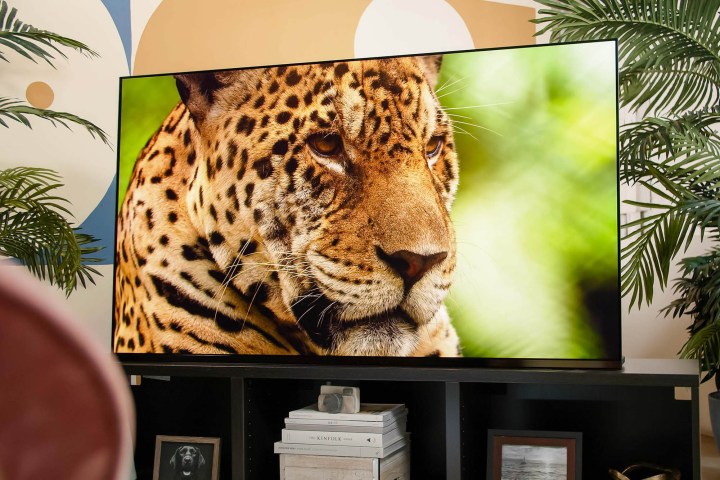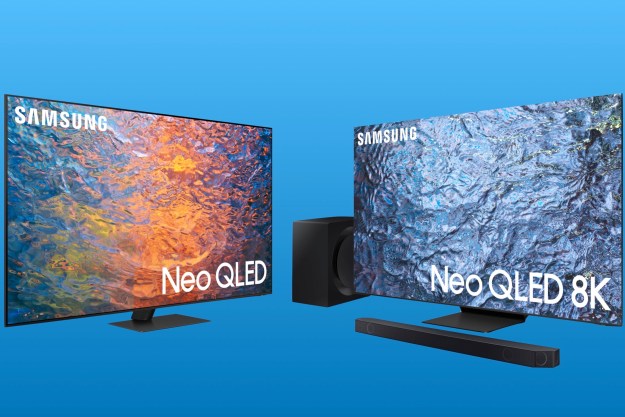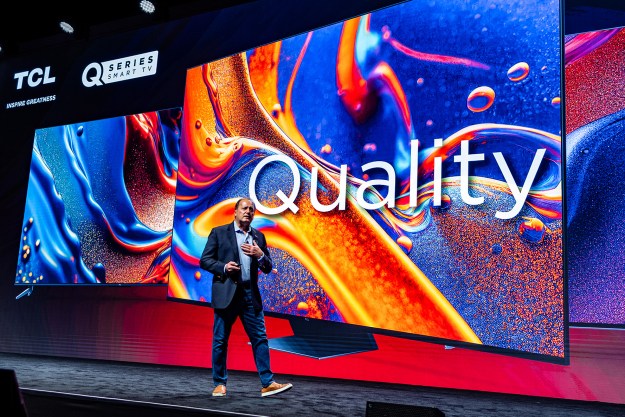The European Union is about to ban most of the best TVs you can buy. And if you think that couldn’t affect you, think again.
As of the time of this article’s publication, a revised restriction on TV power consumption goes into effect in the 27 European nations that make up the EU on March 1, 2023. If nothing changes between now and then, there won’t be a single 8K TV that can be sold in the EU. The rule also will affect a couple of 4K OLED TVs, 65-inch QD-OLED TVs, and at least one high-performance 4K QLED TV.
In short, most of the best TVs that you can buy today can’t pass the new power efficiency restrictions and will effectively be banned.
When I first caught wind of these headlines, I was dismissive. But as I dug deeper, I realized this issue is not something at which we should simply shrug our shoulders. While it may seem like this issue will only affect consumers in the EU, it will likely have a ripple effect throughout multiple industries in many nations. This move has some huge implications, which I’ll detail shortly, but first, how did we get here?
Good intentions gone bad
Several years ago, the EU developed what it calls the Energy Efficiency Index, or EEI for short. In order to figure out what the energy efficiency of a display was, the commission looked at data from displays that were sold between 2012 and 2017. That is, TVs that are now 7 to 10 years old. I’m curious about the methodology used to determine these efficiency numbers and am investigating them for a future article, but for now the takeaway is that the TV industry generally felt like the numbers the commission came up with were sound and fair and that meeting the efficiency standards was manageable. Thus, TVs have met the standards for several years.
8K TVs, by nature of how LCD panels function, consume considerably more power than 4K TVs.
But these efficiency standards were developed for HD and 4K TVs. When the EU decided to update these standards a few months ago, it not only increased the efficiency requirement — meaning HD and
Therein lies the problem. Either someone in the governing body doesn’t understand the fundamental science behind how TVs and displays work, or they just don’t care. The fact is that 8K TVs, by nature of how LCD panels function, consume considerably more power than 4K TVs. And, in fact, several
According to a detailed report by FlatpanelsHD, it appears no 8K as presently manufactured has an EEI low enough to pass the currently proposed standard. Some 65-inch 8K TVs are just over the line, while others would have to see their EEI cut in half in order to pass. It also appears, based on current EEI, numbers, that neither Samsung’s S95B QD-OLED or Sony’s A95K QD-OLED would pass, nor would Samsung’s QN95B 4K QLED TV.
It’s not as if 8K TVs are treading just over the line, either. Many 8K TVs on the market blow past the limit by like 300%, so they are nowhere close to compliance. There’s no quick fix to this, either.
Why 8K TVs consume more electricity
I spoke to Chris Chinnock, who heads up the 8K Association and recently penned a paper on this topic. He points out that an 8K TV panel has four times the pixels of a 4K TV panel. And because of the way LCD panels work, it is significantly harder to pass light through the tiny aperture of those tiny pixels. The harder it is to pass light, the harder you have to push, and that means increasing the brightness of the TV’s backlight system, which as you can imagine, requires a lot more power.
Because 8K TVs necessarily need far more power just to be as bright as 4K TVs — let alone a bit brighter, as is expected of the premium TV category — significantly reducing 8K TV power consumption would require reinventing the LCD panel as we’ve known it for decades. That can’t happen overnight — if it can happen at all.

What’s the solution?
So what can be done? One idea that’s been floated is that TV makers institute an “EU picture mode” of sorts. The way the EU rule works is that the TV need only pass the efficiency standard in its default picture mode preset for an SDR signal — one that is set at the factory, and would therefore be the default out-of-box setting. Owners would still be able to switch their TV’s picture mode to a power-guzzlingly bright option at their discretion. But, in this proposed scenario, the TV’s out-of-box picture quality would be unacceptably dim.
Considering consumer behavior, such a solution is not only inelegant, it is also likely to be disastrous. Imagine consumers purchasing a TV based on the fantastic picture quality they saw on a store display, getting it home, setting it up, and turning it on only to get a picture that looks nothing like what they saw at the retailer. They might even think the TV was defective and return it!
To stave off rampant returns, salespersons could warn their customers that when they get their TV home, they would need to go through a long list of instructions in order to make their TV look good. Still, it’s been my experience that getting new TV owners to adjust their picture settings at all has only ever been an uphill battle. From where I sit, an EU picture mode doesn’t sound like a real solution at all.
The TV tech isn’t the problem
I would argue that the state of the art in 8K and 4K TVs isn’t the problem. The issue is the arbitrary manner in which the EU is updating its rules. This new standard needs to be reviewed and revised. But unfortunately, sources close to the commission responsible for this standard are reportedly not interested in revisiting their decision. That seems rather childish, does it not?
There are better ways to address how much electricity TVs consume.
To be clear, I have no objection to efforts aimed at reducing energy consumption. As a tree-loving, ardent composter and recycler who supports wind and solar energy and drives a tiny little electric car in the uber-green state of Oregon, I consider myself a conservation advocate. I agree that TVs need to operate as efficiently as possible. I would very much like to see energy consumption during an energy crisis go down.
But there are better ways to address how much electricity TVs consume. I’d propose implementing something similar to Netflix’s “hey are you still watching” feature, wherein users would be prompted to click a button on their remote every hour or so to confirm that they were actually watching the TV as opposed to having it running in the background or accidentally left on while they are away from the home. Since users can configure their TVs to be power guzzlers anyway, perhaps taking steps to prevent unnecessary waste of energy would be a more successful measure.
First the EU, then you
As we’ve seen recently, the EU’s policy decisions have a way of expanding beyond its borders. The EU’s recent decision to institute USB-C as its charging port standard will change what your next iPhone looks like and how it works. Apple’s hand has been forced — soon all iPhones and iPads will have moved away from Lightning ports in favor of USB-C.
California emissions standards are another example of how the tail wags the dog. Carmakers don’t make one car model for Californians and another for the rest of the U.S. All cars have to pass California emissions standards off the production line, whether they are headed to California or Connecticut.
Whatever TV manufacturers must do to make their TVs marketable in European countries will likely apply to the televisions sold in North America and beyond. Whether intentional or not, the EU is making decisions that will affect what your TV looks like in the years to come.
Editors' Recommendations
- Samsung’s 2024 Neo QLED TVs are here, and you can preorder them now from $1,200
- You Asked 10: picture calibration, best budget buys, and premium small screens
- Sony Bravia X95L mini-LED vs. TCL QM8 QLED: The best LCD TV and the one you should buy
- Can you buy NFL Sunday Ticket on a TV? Yes, no, and sort of
- Samsung’s biggest Neo QLED 8K TV comes with an equally huge price




